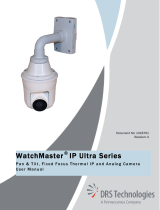
Manual – MOVIDRIVE® MDX61B Synchronous Operation Board DRS11B
15
4
Connection and terminal description of the DRS11B option
Assembly and installation instructions
4.2 Connection and terminal description of the DRS11B option
Part number
Synchronous operation board type DRS11B: 824 672 6
The DRS11B option can only be installed in connection with MOVIDRIVE
®
MDX61B
sizes 1 to 6.
The DRS11B option must be inserted in the expansion slot.
Front view of
DRS11B
Description Terminal Function
56522BXX
X40: Connec-
tion binary
inputs
X40:1 EING0: Free running mode
X40:2 EING1:Offset 1
X40:3 EING2:Offset 2
X40:4 EING3:Offset 3
X40:5 EING4: IPOS variable H477.0
X40:6 EING5: IPOS variable H477.1
X40:7 DCOM
X40:8 VO24
X40:9 AUSG0: IPOS variable H476.0
X40:10 AUSG1: IPOS variable H476.1
X4011 DGND
"0" signal = synchronous operation, "1" signal = free-
running
"0" signal= no offset, a "1" signal at EING1, EING2 or
EING3 activates offset 1, 2 or 3 (P225,P226 or P227)
The signal level of EING4 and EING5 can be read with
IPOS variable H477
Reference potential for X40:1 ... X40:6
Voltage output DC+24 V, max. DC 100 mA
Binary outputs X40:9 and X40:10: max DC 50 mA,
short-circuit proof and protected against external volt-
age. The signal level of AUSG0 and AUSG1 can be
read and set with IPOS variable H476
Reference potential for binary signals
X41: Connec-
tion
synchronous
encoder
X42:Connec-
tion master
encoder
X41/X42:1 signal track A
X41/X42:2 signal track B
X41/X42:3 signal track C
X41/X42:4 reference potential DGND
X41/X42:5 reference potential DGND
X41/X42:6 signal track A
X41/X42:7 signal track B
X41/X42:8 signal track C
X41/X42:9 VO24
Incremental encoder input for synchronous encoder
(X41) or master encoder (X42). Only use 5 V TTL
encoders, encoders with RS422 signal properties or
sin/cos encoders. Encoders with 24 V DC voltage sup-
ply can by supplied directly from X41:9 or X42:9. For
encoders with 5 V DC voltage supply, the option "5 V
encoder supply type DWI11A" must be connected
between X41/X42 and the encoder.
DC 24 V voltage supply for encoders,
max. DC 650 mA
X43: Encoder
output
X43:1 signal track A
X43:2 signal track B
X43:3 signal track C
X43:4 Not assigned.
X43:5 reference potential DGND
X43:6 signal track A
X43:7 signal track B
X43:8 signal track C
X43:9 Not assigned.
Incremental encoder output
When P230 "Synchronous encoder = OFF" or
"EQUAL-RANKED", number of pulses as at encoder
connection X42.
When P230 "Synchronous encoder = CHAIN," number
of pulses as at encoder connection X41.
X44: 24 V volt-
age input
X44:1 GND
X44:2 DC 24 V
X44:3 GND
DC 24V voltage supply
• of the encoders connected to X41/X42 (max. load
X41 and X42: ≤ DC 650 mA)
• of the binary outputs X40:9 and X40:10,
(max. load: DC 50 mA)
• for reference output X40:8: DC 24 V,
(max. load: DC 100 mA)
LED OFF (red)
LED Sync
(green)
ON = Free-running
OFF = Synchronous operation
ON = Angle difference > value of P514
OFF = Angle difference < value of P514
DRS11B
X40X44
X41X42X43
OFF
Sync
1
5
6
9
5
1
9
6
5
1
9
6






















